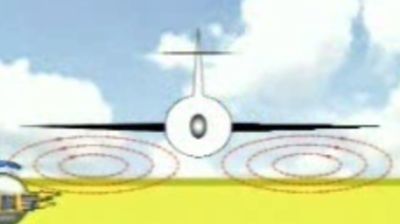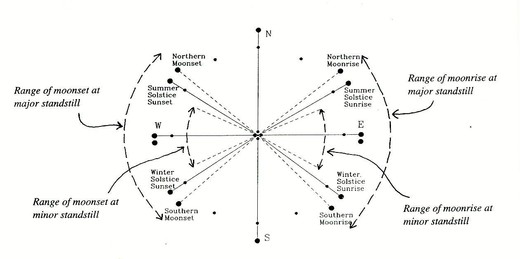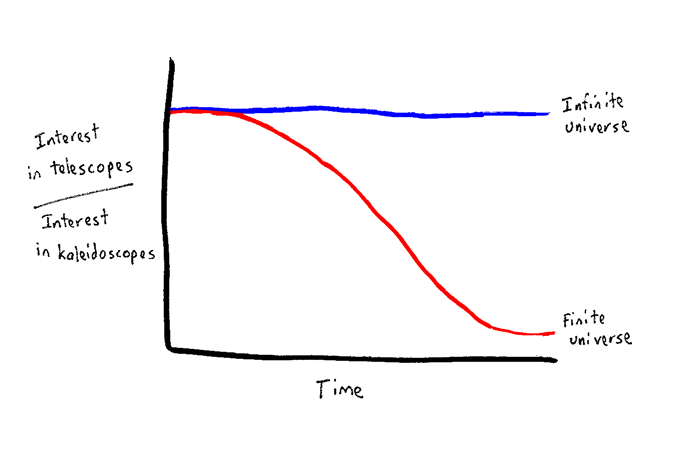It's a pretty decent webcomic.
Micah Sittig
你是互联网,我是防火墙
Thursday, December 17, 2009
Wednesday, December 16, 2009
Thursday, December 10, 2009
It's time for curmudgeon-Micah again: the General Office of the State Council just released the schedule of national holidays for 2010 (as usual, at the last minute).
- 一、元旦:1月1日至3日放假公休,共3天。
- 二、春节:2月13日至19日放假调休,共7天。2月20日(星期六)、21日(星期日)上班。
- 三、清明节:4月3日至5日放假公休,共3天。
- 四、劳动节:5月1日至3日放假公休,共3天。
- 五、端午节:6月14日至16日放假调休,共3天。6月12日(星期六)、13日(星期日)上班。
- 六、中秋节:9月22日至24日放假调休,共3天。9月19日(星期日)、25日(星期六)上班。
- 七、国庆节:10月1日至7日放假调休,共7天。9月26日(星期日)、10月9日(星期六)上班。
As the chair of the academic calendar committee at my school, each year I look forward to getting my hands on this schedule and how it matches my predictions for the second half of our current academic calendar, as well as how it will affect our planning for the next schoolyear's calendar. And each year I gnash my teeth and stomp my feet at the decision of the State Council regarding the distribution of the days off during the year and/or surrounding the holidays.
Most of the holidays are scheduled in a way that suggests sanity. The Chinese New Year doesn't affect us as the school takes 3/4 weeks off around that period anyway. The Tomb-Sweeping Holiday in April and
As usual, though, this calendar has a couple zingers. The Dragon Boat Festival falls on a Wednesday in June next year, so that State Department has decided that people should work through the previous weekend and take off Monday through Wednesday (see below). On my calendar for the school I had simply made the Wednesday a single day off in the middle of the week; since summer vacation follows just a couple weeks later, we don't really need a 3-day weekend at this point. I'm hoping we won't have to change my original plan.
| S | M | T | W | θ | F | S |
| S | M | T | W | θ | F | S |
Also, the Mid-Autumn festival falls on a Wednesday in late September; this time people are scheduled to work the previous Sunday and following Saturday to take off Wednesday through Friday; yes, this means that vacation ends on Friday, people work Saturday, then take Sunday off before resuming the regular workweek schedule. (see below) Guess how many people are going to be calling in sick on that Saturday! And guess what I'm going to be doing for the school calendar? I don't know yet, but I'm thinking that we don't need a 5-day holiday just 3 weeks into next schoolyear.
| S | M | T | W | θ | F | S |
| S | M | T | W | θ | F | S |
| S | M | T | W | θ | F | S |
Argh.

Tuesday, December 08, 2009
Racing Aerodynamics for Physics
In regular Physics class, we're coming up on the study of gases, including Bernoulli's principle. I'm looking up examples on Youtube to show in class (curving a soccer ball kick, tornado tearing the roof off a house) and I find myself getting deeper and deeper into the fascinating world of... F1 aerodynamics.
From what I pieced together, early-on racecar designers figured out that having a racecar that would stick to the track meant that you could go around corners more quickly without skidding. The downward force that stuck the car is called the Ground Effect, and has lot of other applications.

As I understand it, the earliest groundeffect was achieved by using tunnels under the car that were narrower at the middle and wider at the edges so that the air was compressed and then decompressed as it went under the car. This creates a low pressure zone at the middle bottom of the car, keeping it "sucked" onto the track. In physics we call this the Venturi effect. Diffusers, which spread the air at the back of the car, act in a similar way but get around new rules against tunnels on the underbody of the car.
Pretty soon every car had these tunnels. Then a wider engine came along that didn't have room for these tunnels, so one car team installed a fan on the back of their car (the "fancar") that served to cool the motor as well as suck the air through the bottom of the car and create a lower pressure zone there.
The fan was so effective that other teams complained, but by then the aerodynamics teams that started using aerofoils, basically inverted airplane wings that provide "reverse lift" to push the cars down. Wings are attached at the front and back of the cars in positions that maximize their contact with air flow and provide an even downforce. The position and angle of the wings can be customized to the curviness of different tracks. Now everybody wings too.

An interesting thing is that "ground effect" in the world of flight refers to an increase in lift that winged objects experience when they fly close to the ground due to the vortices coming off the ends of the wings interacting with the surface of the ground. It's a force in the opposite direction to that desired by racecar designers.
Another interesting thing is the social dynamics in the aerodynamics "race" for the fastest car. As one astute interviewee said, each time a racing team makes another technological breakthrough that allows faster racecars the other teams simultaneously rush to get the same feature on their cars and make a stink about it to get it banned by the governing body, who usually either bans or limits the use of the new technology in the name of safety. And by safety, they mean ensuring driver safety by keeping cars from going too fast! Amazing.
(I'm thinking this would make a good MetaFilter front-page post.)
Saturday, December 05, 2009
 Widescreen and worth it! I just spent the last four hours learning how to upgrade my computer to support the new 19" widescreen Samsung LCD monitor we bought to replace the old Viewsonic that finally kicked the can a couple days ago. This involved re-installing a couple sets of drivers, figuring out that the drivers were already up-to-date in the first place, learning that the problem lay in something called the video BIOS, or vBIOS, building a bootable USB stick, and then using it to flash my computer's BIOS with 1) the manufacturer-released BIOS update that wasn't recent enough, and 2) a version of the BIOS that had been hacked to include support for the monitor's optimal resolution. The moment I saw "1440x900" in the Display control panel I was as ecstatic as you can be after sitting at the computer for 4 hours, but when I flipped the switch it was all worth it: crystal-clear type on seemingly horizonless screen space in vivid and beautiful color. Hooray.
Widescreen and worth it! I just spent the last four hours learning how to upgrade my computer to support the new 19" widescreen Samsung LCD monitor we bought to replace the old Viewsonic that finally kicked the can a couple days ago. This involved re-installing a couple sets of drivers, figuring out that the drivers were already up-to-date in the first place, learning that the problem lay in something called the video BIOS, or vBIOS, building a bootable USB stick, and then using it to flash my computer's BIOS with 1) the manufacturer-released BIOS update that wasn't recent enough, and 2) a version of the BIOS that had been hacked to include support for the monitor's optimal resolution. The moment I saw "1440x900" in the Display control panel I was as ecstatic as you can be after sitting at the computer for 4 hours, but when I flipped the switch it was all worth it: crystal-clear type on seemingly horizonless screen space in vivid and beautiful color. Hooray.
Tuesday, December 01, 2009
Where will the moon be tonight? That a simple question but it can have a complicated answer. The simplest would be, "about 15 degrees behind where it was last night." The more complicated ones start with "depends what year it is." Today I got curious so I searched around and found a web-page that scratched my itch and gave me a new idea.
The page is on the University of Massachusetts Amherst's website, and is called "MOON TEACHINGS FOR THE MASSES". It has nice diagrams like this:

and this:

that help explain the paths of the Sun and Moon across the sky.
The easiest way to track the paths of the Sun and Moon is by the positions where they rise and set on the horizon. These positions swing back and forth like a pendulum, north and south and back again, according to where they are in their cycle around the Earth (remember, the Sun's cycle lasts 365 days, while the moon's is only 29.5 days).
On the summer and winter solstices, the Sun will rise at its maximum northern position or maximum southern position. This corresponds to the point of the pendulum swing where it comes to a rest and turns around. On the equinoxes, the sun will rise and set on the cardinal points E and W. This corresponds to the middle of the swing, where the pendulum is moving at its maximum speed.
At both equinoxes, the Sun reaches a maximum declination (height above the horizon) of 90° minus your latitude. The max altitude at the solstices is 90° minus your latitude, plus the tilt of the Earth 23.5° in the summer and minus 23.5° — tilt in the other direction — in the winter. If your home latitude is greater than 90° - 23.5° = 76.5° degrees, then in the winter the sun will have a maximum altitude of less then zero degrees and you get to experience the 24 hour darkness of polar night!
In Shanghai we are at a latitude of 31.2° and HeavensAbove says the sun will reach a max altitude today of 37° at 11:42 this morning. This makes sense because we're getting close to December 22, the winter solstice, when the sun will reach an altitude of just 90° - 23.5° - 31.2° = 35.3°, it's lowest path across the sky this year. This is also the well-known shortest day of the year. On December 23 the sun will rise just a bit more northerly and earlier as it begins its return to summer.
The moon goes through a similar cycle but much more quickly. The Moon's "equinoxes" and "solstices" happen every two weeks! (29.5 days / 2) Since the Moon's orbit is tilted at 5° from the plane of the Earth's orbit around the Sun, we see its maximum and minimum altitudes vary from the Sun's by that amount. Furthermore, the moon has a noticeable 18.6-year cycle due to relatively quick precession, meaning that the Moon's "pendulum" swings wider than the Sun's by 5° every 9.3 years, and shorter than the Sun's by 5° after another 9.3 years. Stack onto this that the Sun outshines the Moon when both are in the sky — the Moon is mostly visible only at night — and this means that what you see in the sky can range from high moons to low moons, to moons of different phases, to no moons at all!
Currently, we are just starting the backwards motion of the Moon's 18-year pendulum swing: in 2006 the Moon was ranging a full 23.5° + 5° = 28.5° above and below the Sun's path, but now in 2009 we are swinging back towards a minimum and, for example, beating it at most by 25.8° tomorrow night, December 2, for a full altitude of 90° - 31.2° + 25.8° ≈ 84.6° (HeavensAbove says 84.5°). This is why you may have noticed the Moon being so high in the sky for the past few days, not to mention that we're one day away from the full moon! But remember the moon's quick cycle: just two weeks from tomorrow the Moon complete half of its cycle and have a max altitude of only 90° - 31.2° - 25.8° ≈ 33.0°. And two weeks later we'll be back to a bit less than the current 84.6°, as the moon continues its precession.
All of this to say that it would be a neat project to map the rises and settings of the Sun every day to see the progression from solstice to equinox and back again. Not that I'm contemplating setting up a new Stonehenge in my backyard (thought a mini-one would be nice), but it might make a good addition to the observatory or school garden.
(So Dad, to answer your question: the moon is high in in the sky because ➀ we're coming off of a precession maximum, ➁ it happens every 29.5 days, and ➂ it's happening at the same time as the full-moon so it's particularly bright.)
(Disclaimer: these are the study notes of an amateur astronomer, so don't take anything here for granted. Follow my links to more authoritative sources.)
About Me

- Name: Micah Sittig
- Location: Zhangjiang High-Tech Park, Shanghai, China
Archives
- 11/01/2002 - 12/01/2002
- 12/01/2002 - 01/01/2003
- 01/01/2003 - 02/01/2003
- 02/01/2003 - 03/01/2003
- 03/01/2003 - 04/01/2003
- 04/01/2003 - 05/01/2003
- 05/01/2003 - 06/01/2003
- 06/01/2003 - 07/01/2003
- 07/01/2003 - 08/01/2003
- 08/01/2003 - 09/01/2003
- 09/01/2003 - 10/01/2003
- 10/01/2003 - 11/01/2003
- 11/01/2003 - 12/01/2003
- 12/01/2003 - 01/01/2004
- 01/01/2004 - 02/01/2004
- 02/01/2004 - 03/01/2004
- 03/01/2004 - 04/01/2004
- 04/01/2004 - 05/01/2004
- 05/01/2004 - 06/01/2004
- 06/01/2004 - 07/01/2004
- 07/01/2004 - 08/01/2004
- 08/01/2004 - 09/01/2004
- 09/01/2004 - 10/01/2004
- 10/01/2004 - 11/01/2004
- 11/01/2004 - 12/01/2004
- 12/01/2004 - 01/01/2005
- 01/01/2005 - 02/01/2005
- 02/01/2005 - 03/01/2005
- 03/01/2005 - 04/01/2005
- 04/01/2005 - 05/01/2005
- 05/01/2005 - 06/01/2005
- 06/01/2005 - 07/01/2005
- 07/01/2005 - 08/01/2005
- 08/01/2005 - 09/01/2005
- 09/01/2005 - 10/01/2005
- 10/01/2005 - 11/01/2005
- 11/01/2005 - 12/01/2005
- 12/01/2005 - 01/01/2006
- 01/01/2006 - 02/01/2006
- 02/01/2006 - 03/01/2006
- 03/01/2006 - 04/01/2006
- 04/01/2006 - 05/01/2006
- 05/01/2006 - 06/01/2006
- 06/01/2006 - 07/01/2006
- 07/01/2006 - 08/01/2006
- 08/01/2006 - 09/01/2006
- 09/01/2006 - 10/01/2006
- 10/01/2006 - 11/01/2006
- 11/01/2006 - 12/01/2006
- 12/01/2006 - 01/01/2007
- 01/01/2007 - 02/01/2007
- 02/01/2007 - 03/01/2007
- 03/01/2007 - 04/01/2007
- 04/01/2007 - 05/01/2007
- 05/01/2007 - 06/01/2007
- 06/01/2007 - 07/01/2007
- 07/01/2007 - 08/01/2007
- 08/01/2007 - 09/01/2007
- 09/01/2007 - 10/01/2007
- 10/01/2007 - 11/01/2007
- 11/01/2007 - 12/01/2007
- 12/01/2007 - 01/01/2008
- 01/01/2008 - 02/01/2008
- 02/01/2008 - 03/01/2008
- 03/01/2008 - 04/01/2008
- 04/01/2008 - 05/01/2008
- 05/01/2008 - 06/01/2008
- 06/01/2008 - 07/01/2008
- 07/01/2008 - 08/01/2008
- 08/01/2008 - 09/01/2008
- 09/01/2008 - 10/01/2008
- 10/01/2008 - 11/01/2008
- 11/01/2008 - 12/01/2008
- 12/01/2008 - 01/01/2009
- 01/01/2009 - 02/01/2009
- 02/01/2009 - 03/01/2009
- 03/01/2009 - 04/01/2009
- 04/01/2009 - 05/01/2009
- 05/01/2009 - 06/01/2009
- 06/01/2009 - 07/01/2009
- 07/01/2009 - 08/01/2009
- 08/01/2009 - 09/01/2009
- 09/01/2009 - 10/01/2009
- 10/01/2009 - 11/01/2009
- 11/01/2009 - 12/01/2009
- 12/01/2009 - 01/01/2010
- 01/01/2010 - 02/01/2010
- 02/01/2010 - 03/01/2010
- 03/01/2010 - 04/01/2010
- 05/01/2010 - 06/01/2010
- 06/01/2010 - 07/01/2010
- 09/01/2010 - 10/01/2010
- Current Posts



